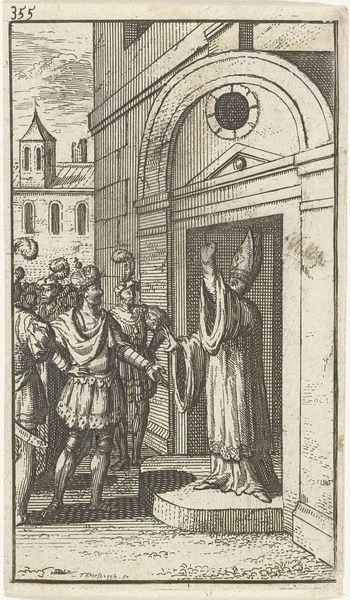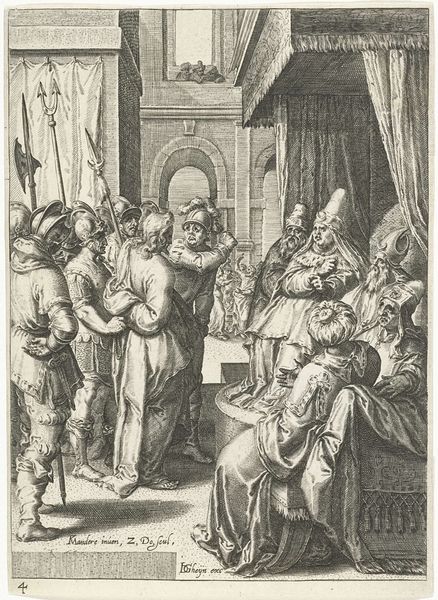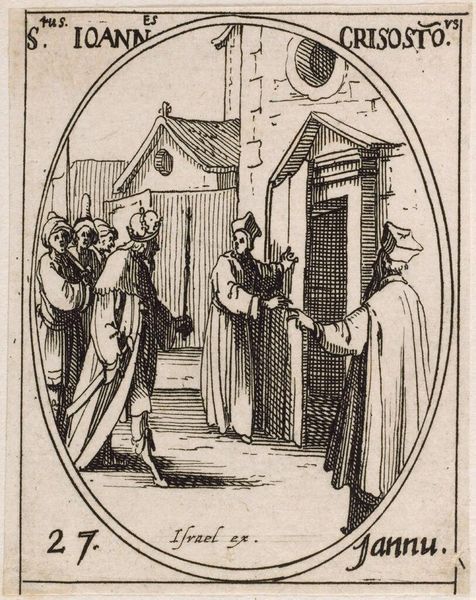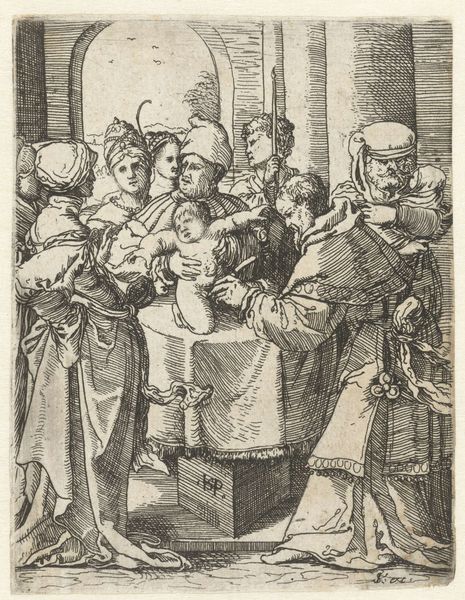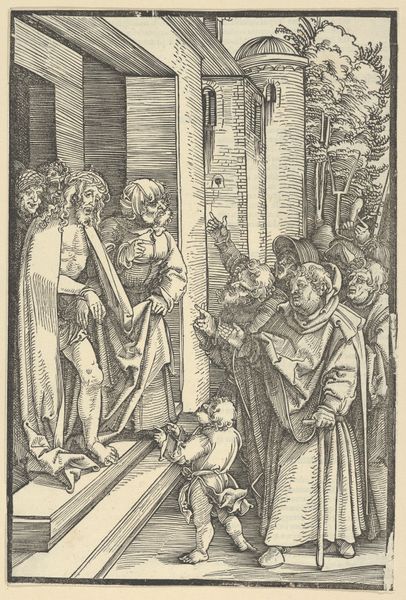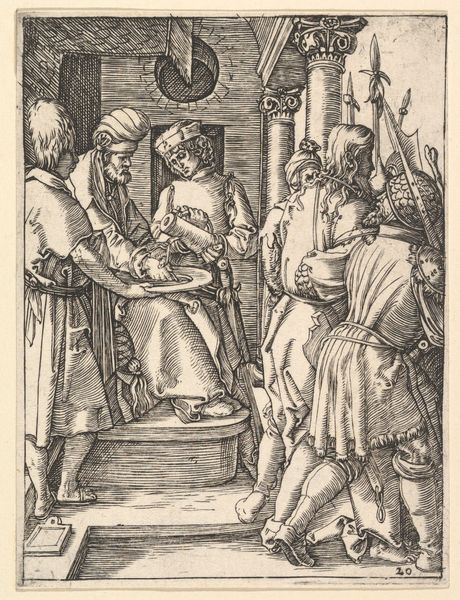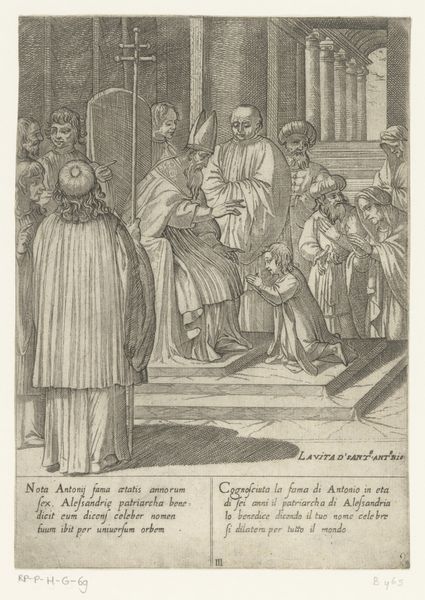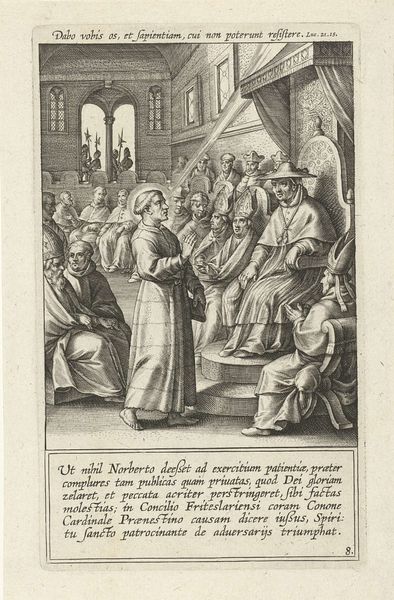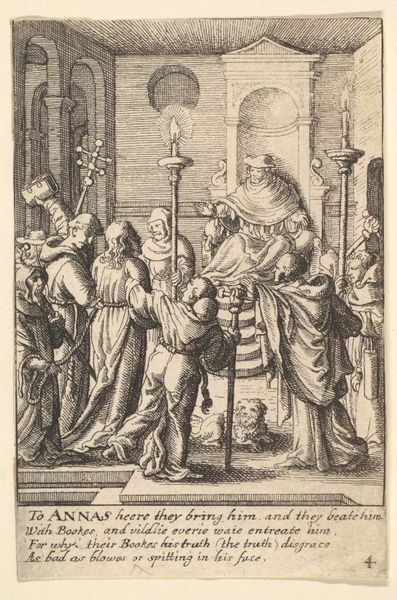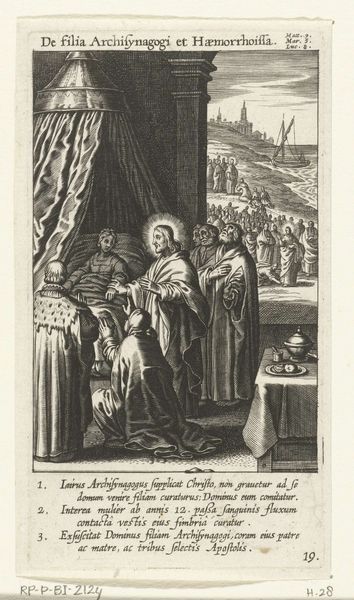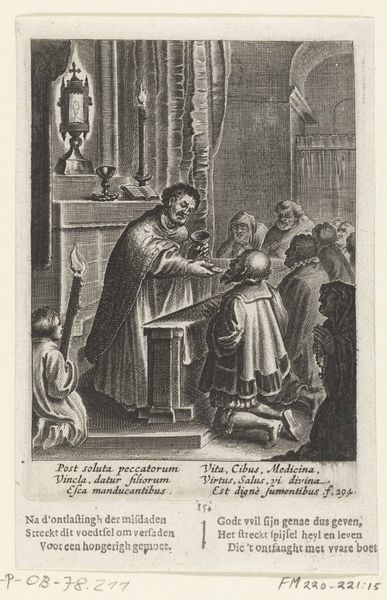
engraving
#
figuration
#
history-painting
#
northern-renaissance
#
engraving
Dimensions: height 169 mm, width 117 mm
Copyright: Rijks Museum: Open Domain
Curator: Welcome to the Rijksmuseum. Before us is “Aankondiging van de geboorte van Johannes,” or “The Annunciation of the Birth of John,” an engraving crafted by Abraham de Bruyn in 1583. Editor: The clarity is immediately striking, even within the relatively small scale. The balance and positioning create a remarkably formal composition, doesn't it? Curator: Absolutely. Consider the history-painting theme. We’re invited into a moment of profound, gendered significance – the announcement of John's birth to Zechariah – but from within a very specific social structure, dominated by male religious authority. Editor: See how the precise hatching method yields textures almost indistinguishable from the real fabrics and skin it imitates? De Bruyn masterfully balances fine detail with structural simplicity, providing a blueprint of an artistic movement during the Northern Renaissance. Curator: And look how this plays out! The setting seems both intimate, in terms of human relations, and grand in terms of religious institution. In a socio-historical perspective, this image functions as both a piece of biblical narrative, but also a meditation on the role of religion and prophecy in daily life during that period. What does it mean to be visited by angels as opposed to being regulated by clergymen? Editor: But what truly rivets me are the spatial dimensions De Bruyn creates with linear strokes. The building, stage-like and perspectivally coherent, frames the encounter; the human forms in different planes showcase depth... It's a study of illusion! Curator: And these people, of course, have so much more meaning when considered as products of their time! How are they constructed in terms of power? Who gets the central role and who stays on the fringes? Notice the woman behind Zechariah, headscarved and secondary to his reception of this angelic visitation. It’s hardly incidental. Editor: Yes, while it certainly prompts layered considerations on content, I find myself most engrossed by De Bruyn’s control of line— it achieves a delicate equipoise within what some might find dogmatic. Curator: Indeed. Thank you for exploring its multiple layers with me. I hope visitors take the time to consider what the relationships portrayed signify— not just the biblical annunciation itself but the surrounding social performance.
Comments
No comments
Be the first to comment and join the conversation on the ultimate creative platform.
